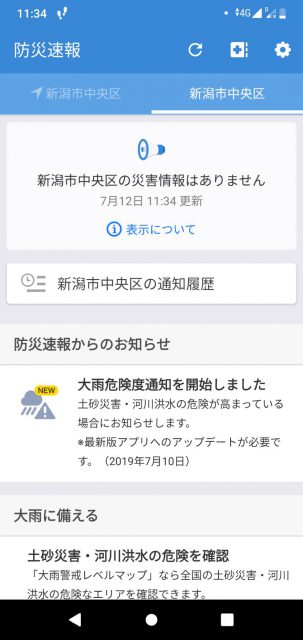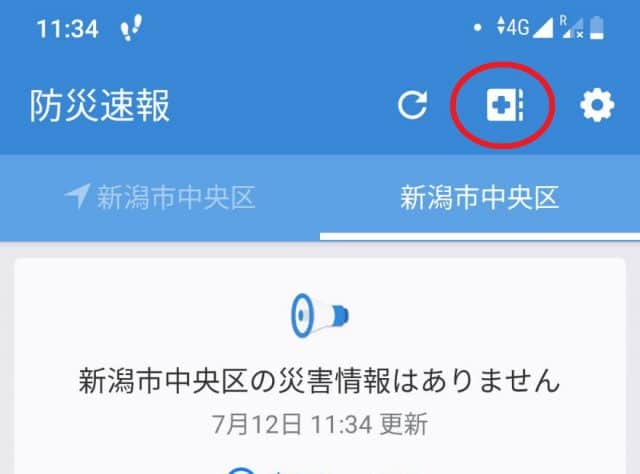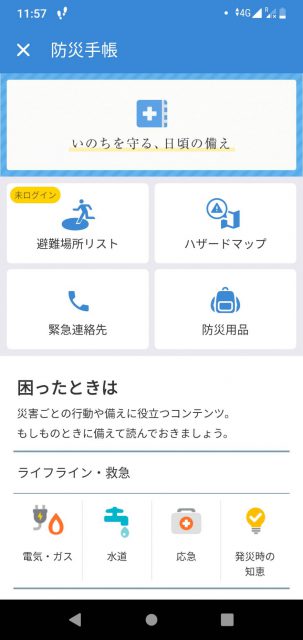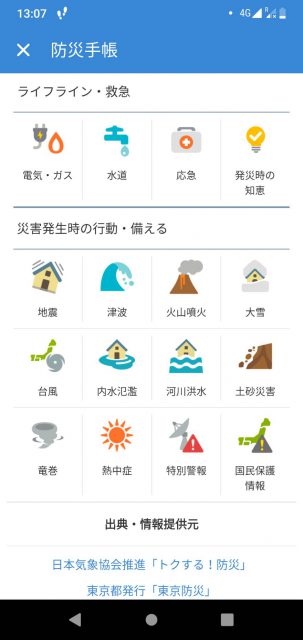Earthquakes, Tsunami, Typhoons in Japan – How to Keep Your Cool
Japan tends to show up in news sources often when it comes to the topic of natural disasters. Earthquakes, tidal waves, typhoons, volcanic outbursts – you name it, there are many of them all over the country, almost every day. The reason for frequent earthquakes and active volcanoes is that the island group is located at such a unique place where oceanic and continental plates meet. Earthquakes trigger tidal waves (tsunami 津波) at seashores; and typhoon season usually occurs from May to September, all over the country.
If you are an international student, you probably received basic instructions from your school about what to do when a natural disaster happens, but most cities’ municipal offices also offer multilanguage pamphlets with plenty of information based on the area you live in. You can obtain one of these pamphlets right away when you register your home address on your residence card.
It’s also useful to have all information concentrated in one hand – in your smartphone, to be exact. There are many applications that help users access information rapidly without having to flip through booklets or look for it all over the internet in case of an emergency, with the function to continuously receive notifications about the specific region you live in.
For example, I would highly recommend downloading the app called Y!防災速報, the info app of Yahoo! Japan which can be installed for both Android and iOS. Unfortunately, it’s not available in English yet, but it’s user-friendly, makes all kinds of necessary information easy to reach and see, and doesn’t use terribly difficult Japanese – meaning it’s also useful for your language studies!

This is what the general layout looks like after you download, install, and open the application from Google Play Store or App Store.
You might be asked to log in with a Yahoo account first, but if you don’t have one, just feel free to skip (スキップ) the login process – you can still use it without creating an account.
Any new notifications about important happenings will appear on the top, precluded by a notification (you can set what kind of notices you would like to get in the settings), but current information about things that are not particularly life threatening will also show up on the interface.
When something occurs, all info needed about the area you live in is displayed on the front page, but if you want to check some things in advance, like evacuation areas near your home, school, or workplace, hazard maps, emergency contact numbers, stuff you should prepare in case of a disaster, etc. tap the small booklet icon with the cross in the middle in the top right corner.


This is what you are going to see in your booklet for disaster prevention (防災手帳). It’s compact – you have basically everything you could need in one place.
You can see all options mentioned earlier if you look at the icons in the middle under the booklet.
If you scroll down a little more, you will also see all kinds of instructions about what to do with gas and electricity in your house, water taps, giving first aid, and other kinds of “the more you know” advice that may come in handy during a catastrophe. There are also illustrations that make the descriptions a little easier to understand.

If you still want more information and desire to know absolutely everything that could happen during your stay in Japan, just scroll down to the bottom of the page. You will find plenty of info about not only earthquakes, tsunami, volcanic outbursts, or typhoons, but also about heavy snowfalls, floods, avalanches, wind whirls, heat strokes, and others.
All this might sound a bit scary at first, but these kinds of natural occurrences don’t always result in actual disasters or catastrophes, so there is no need to constantly stress over them. However, it’s better to be safe than sorry, so it’s highly recommended to read through some articles when you have some free time. It’s also important to get familiar with the region you (will) live in and discover if there is a basis to fear any of the things mentioned above – for example, there are prefectures where earthquakes are rare or so low in magnitude that you won’t even notice them, places you won’t really have to worry about getting stuck somewhere in a heavy snowfall (like the southern islands), or inner regions where seashores are far away.
Be safe out there!
